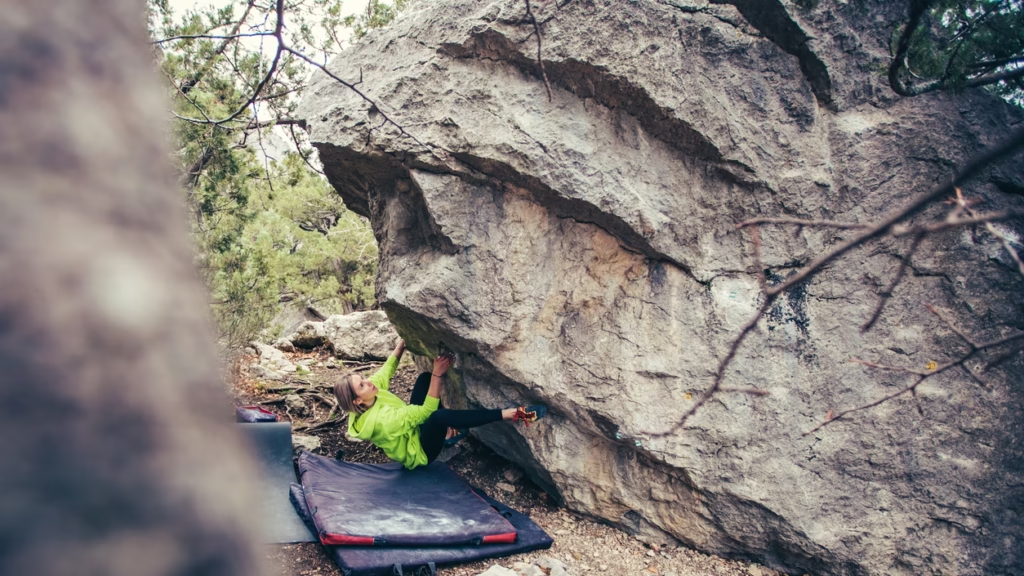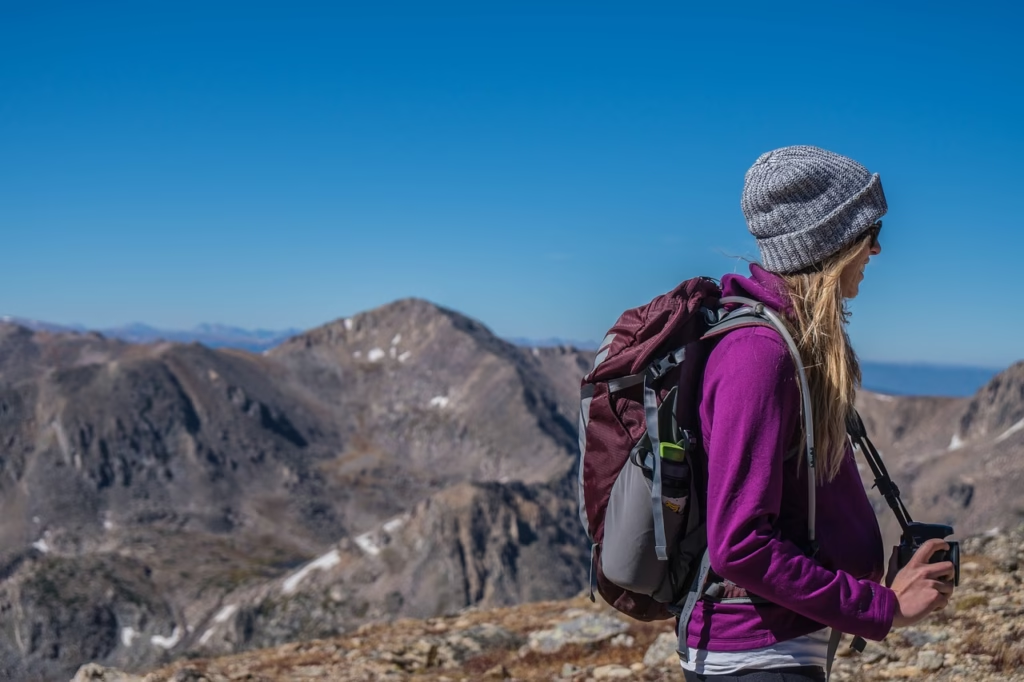Canada’s diverse landscapes and stunning natural beauty make it a dream destination for climbers worldwide. From the towering granite boulders of British Columbia to the picturesque climbs of Quebec, bouldering in Canada offers challenges and rewards for climbers of all skill levels. Whether you’re a seasoned pro looking for your next big project or a beginner eager to start exploring, this comprehensive guide will help you navigate the coolest crags in Canada and prepare for unforgettable adventures.
Locations for Bouldering
Western Canada: British Columbia’s Iconic Boulders
- Squamish: Known as Canada’s climbing capital, Squamish is famous for its towering granite blocks and technical problems. Located just an hour from Vancouver, this spot offers routes ranging from V0 to V14, making it accessible yet challenging.
- Kelowna: Tucked in the Okanagan Valley, Kelowna boasts hidden boulders surrounded by vineyards and lakes. The scenery alone makes it worth the visit.
- Vancouver Island: Beyond the mainland, Vancouver Island provides unique sandstone formations with a mix of outdoor adventure and island charm.
Central Canada: Alberta’s Rocky Mountain Bouldering
- Jasper and Banff National Parks: These parks offer a chance to climb amidst jaw-dropping alpine vistas. The boulders here are often scattered along scenic hiking trails, creating a one-of-a-kind experience.
- Canmore: Known for its vibrant climbing community, Canmore’s accessible routes and proximity to Calgary make it a favorite among locals and visitors alike.

Eastern Canada: Ontario and Quebec’s Thriving Scene
- Niagara Glen (Ontario): Nestled near Niagara Falls, Niagara Glen is renowned for its limestone boulders and technical challenges. It’s a prime spot for both day trips and weekend getaways.
- Val-David (Quebec): A jewel of Quebec’s Laurentians, Val-David is celebrated for its dense forests and rich climbing history. This area offers hundreds of problems for climbers at every level.
Seasonal Tips for Bouldering in Canada
Canada’s vast geography means climbing conditions vary significantly by region and season. Here’s how to plan accordingly:
- Spring: Ideal for central and eastern Canada, as snow begins to melt, revealing dry and climbable routes.
- Summer: Perfect for high-altitude areas like the Rockies or coastal spots in British Columbia. However, pack sunscreen and plenty of water to combat heat and dehydration.
- Fall: Often considered the best season for bouldering across the country, offering cooler weather and spectacular foliage.
- Winter: While some regions become inaccessible due to snow, indoor climbing gyms and heated locations keep the spirit alive.
Essential Gear for Bouldering in Canada
To tackle the unique terrain of bouldering spots in Canada, having the right gear is crucial:
- Crash Pads: Thick and durable crash pads are a must for safety, especially when navigating higher problems.
- Climbing Shoes: Invest in quality shoes with a snug fit for maximum grip on Canada’s varying rock types.
- Chalk and Chalk Bag: Keep your hands dry and ready for gripping holds.
- Clothing: Dress in layers to adapt to Canada’s unpredictable weather.
- Guidebooks and Apps: Resources like “Squamish Bouldering” or local climbing apps provide detailed route maps and insider tips.

A Beginner’s Bouldering Guide for Canada
For those new to bouldering, Canada offers an inviting environment to build skills and confidence:
- Start Small: Seek out beginner-friendly problems (V0–V2) at locations like Squamish’s Stawamus Chief or Niagara Glen.
- Join a Community: Climbing gyms and local clubs are excellent places to learn and connect with fellow climbers.
- Focus on Technique: Mastering basics like footwork and balance will help you progress faster.
- Practice Safety: Always climb with a partner who can spot you effectively and ensure your crash pad is properly positioned.
Safety Guidelines for Bouldering in Canada
While bouldering is exhilarating, it’s not without risks. Here’s how to stay safe:
- Wildlife Awareness: Canada’s wilderness is home to bears, moose, and other animals. Carry bear spray in remote areas and make noise to avoid surprising wildlife.
- Weather Preparedness: Be mindful of sudden changes in weather, especially in mountain regions where storms can roll in unexpectedly.
- Proper Technique: Learn how to fall correctly to minimize injuries, and ensure you’re using quality crash pads.
- First Aid: Carry a basic first aid kit to handle scrapes, bruises, or more serious injuries.

Bouldering Events and Competitions in Canada
For climbers who thrive on community and competition, Canada offers numerous events:
- Squamish Climbing Festival: An annual celebration of climbing culture in one of Canada’s most famous locations.
- Niagara Glen Boulderfest: A popular event that combines climbing with environmental stewardship.
- Indoor Competitions: Many climbing gyms across Canada host regular bouldering competitions, offering a great way to meet fellow climbers and challenge yourself.
Sustainable Bouldering Practices
Preserving Canada’s natural beauty is a shared responsibility. Follow these eco-conscious tips:
- Leave No Trace Principle: Carry out all trash, avoid damaging vegetation, and stick to established trails.
- Respect Wildlife: Observe animals from a distance and never feed them.
- Community Clean-Ups: Join or organize events to help maintain climbing areas.
Accommodations for Bouldering Trips
For those planning multi-day adventures, Canada offers a range of climber-friendly accommodations:
- Camping: Spots like Squamish and Val-David have excellent campgrounds close to the action.
- Hostels and Lodges: Look for affordable options in Canmore, Jasper, or Niagara Falls.
- Airbnb: Many climbers rent out homes or rooms in bouldering hotspots, providing insider tips and local knowledge.
Combining Bouldering with Other Adventures
Maximize your trip by exploring beyond the boulders:
- Hiking: Combine climbing with stunning trails in Jasper, Banff, or the Laurentians.
- Water Sports: Enjoy kayaking or paddleboarding near Kelowna or Vancouver Island.
- Wildlife Watching: Keep an eye out for whales on the west coast or moose in the Rockies.

From Squamish’s granite wonders to Val-David’s dense forests, bouldering in Canada is a thrilling experience for climbers of all levels. With its vast landscapes, vibrant climbing communities, and diverse challenges, Canada continues to solidify its reputation as a top-tier bouldering destination. Whether you’re just starting out or chasing your next V14 project, the country’s natural beauty and welcoming atmosphere make it a must-visit. So grab your gear, plan your trip, and enjoy all that Canada has to offer!
FAQ
- What are the best times to go bouldering in Canada?
Spring and fall offer the most favorable conditions across the country. - Are there beginner-friendly bouldering locations in Canada?
Yes! Niagara Glen and Squamish are great for beginners. - Do I need permits to climb in certain areas?
Some national parks require permits; check local regulations. - What is the cost of bouldering gear in Canada?
Expect to spend $200–$500 for essential gear like shoes, crash pads, and chalk. - How can I meet other climbers in Canada?
Join local climbing gyms or attend festivals like the Squamish Climbing Festival. - Are there guided tours or climbing schools for bouldering?
Yes, several companies offer guided tours and courses tailored to all skill levels.


